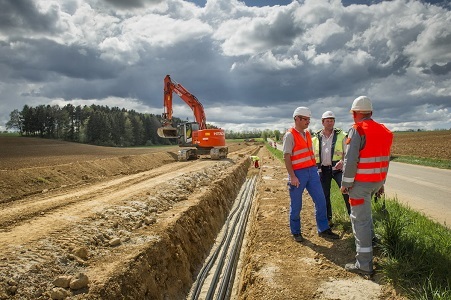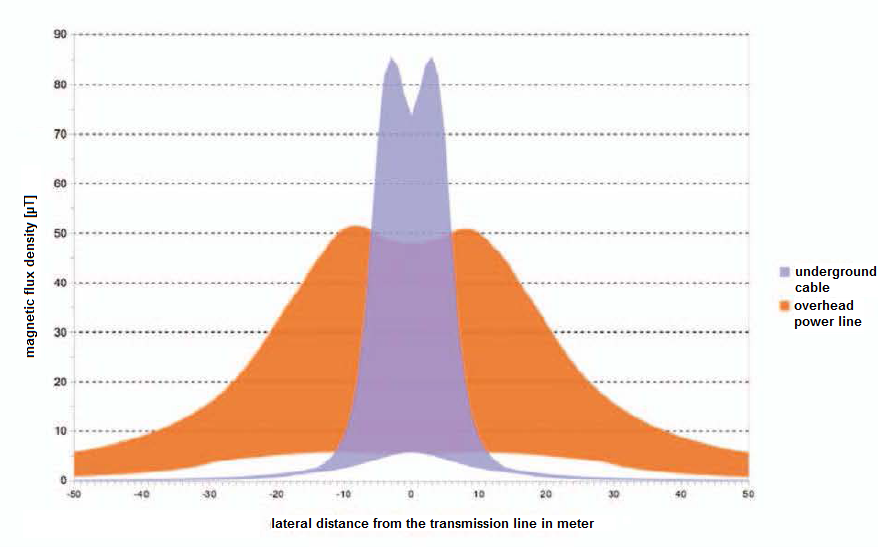Underground cables
Underground cables are used in electricity distribution in low and middle voltage systems. There is little experience in the application of underground cables in extra high frequency systems. Underground cables are surrounded by an outer jacket which protects against mechanical or chemical damages. Underground cables of up to 110 kV are laid in compact three-conductor bundles about 1 m in depth. A greater distance between the conductors is necessary for underground cables with voltages above 110 kV due to heat dissipation. Therefore these underground cables are laid at a depth of 2 - 3 m. Similar to power lines the section width of underground cables for 380 kV is 50 - 70 m.

photo: Nico Pudimat, license: public domain, via Wikimedia Commons
Similar to overhead power lines electric and magnetic fields are produced by underground cables. Electric fields of underground cables are nearly completely shielded by the surrounding jacket and the conducting soil. In contrast the magnetic fields are not shielded and diminish only by distance.
The following figure illustrates that the ground-level magnetic fields of underground cables decrease much more quickly with distance than those of a corresponding overhead power line; however, they can actually be higher directly above the underground cable.

image by courtesy of the Federal Office for Radiation Protection
The range of values is shown in which the maximum expected magnetic flux densities vary under maximum operating conditions. The illustration is based on data from the ECOLOG institute which conducted measurements on several power lines and underground cables and extrapolated the measurement data using simulations to the maximum operating conditions at request of a research project funded by the BfS . More information in final report.
Typical measurement values are available in the database of exposure sources.
Gas Insulated Lines (GIL) are used in high voltage systems. GIL systems consist of a central aluminum conductor that is fitted into an aluminum tube (see figure). The tube is filled with a non-inflammable insulating gas mixture. GIL systems are mainly installed in areas with restricted spaces such as tunnels or in cases of sensitive environmental conditions (like fire protection requirements). Several GIL systems can be laid more closely than underground cables due to lower interference and less heat dissipation in the soil. GIL systems produce very weak magnetic fields and no electric fields in their surroundings in contrast to overhead power lines and underground cables.

image by courtesy of Siemens